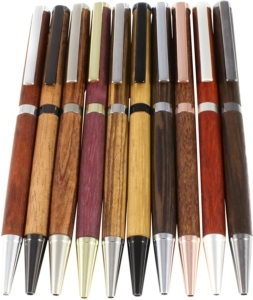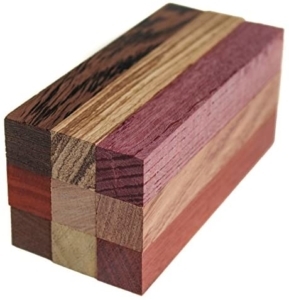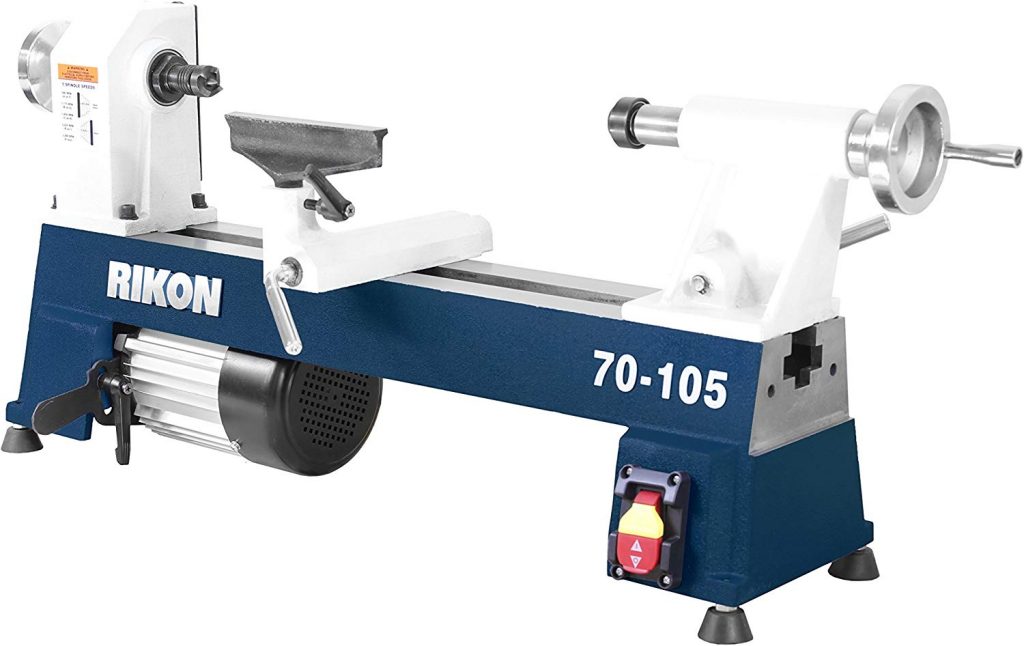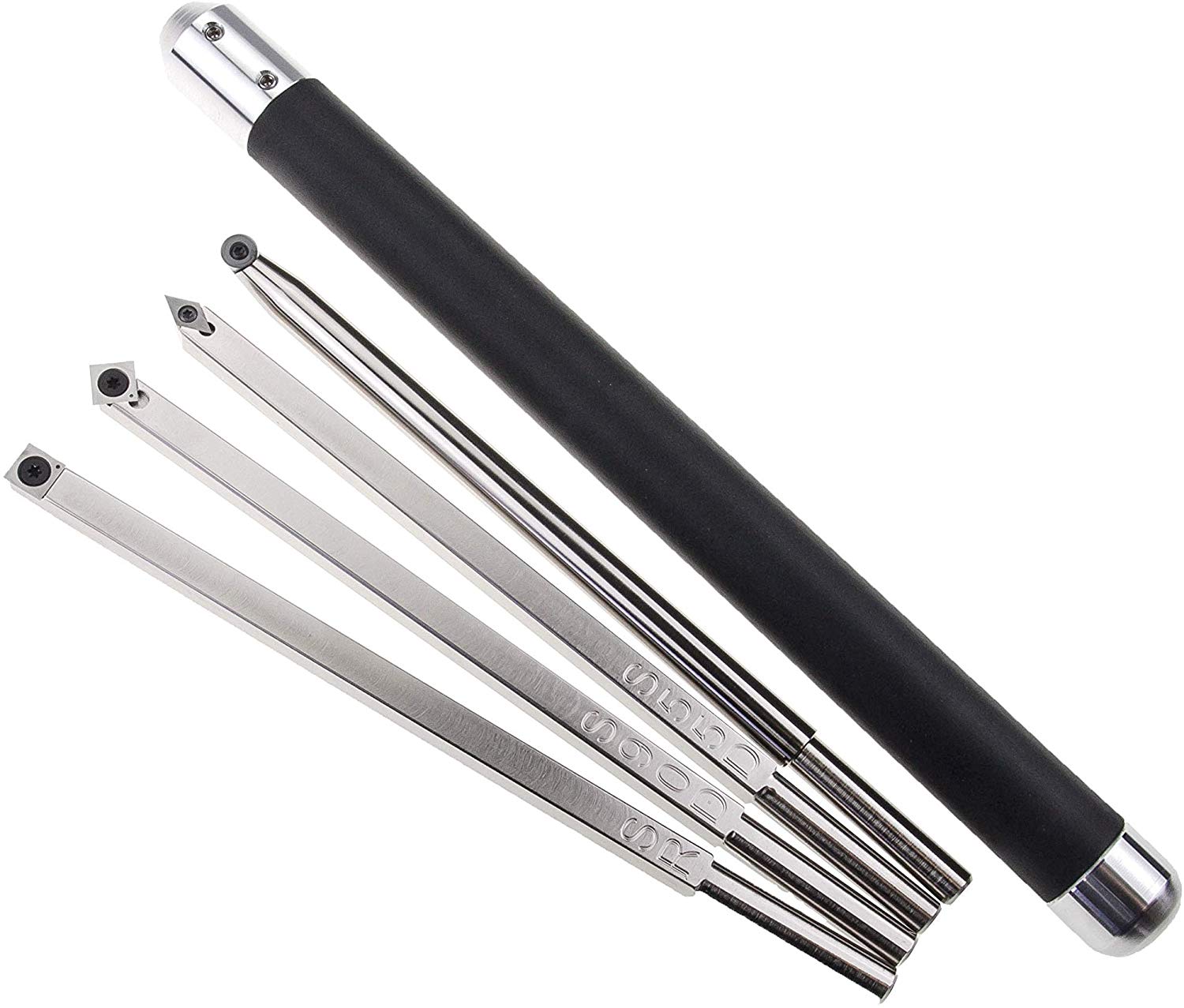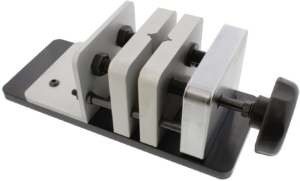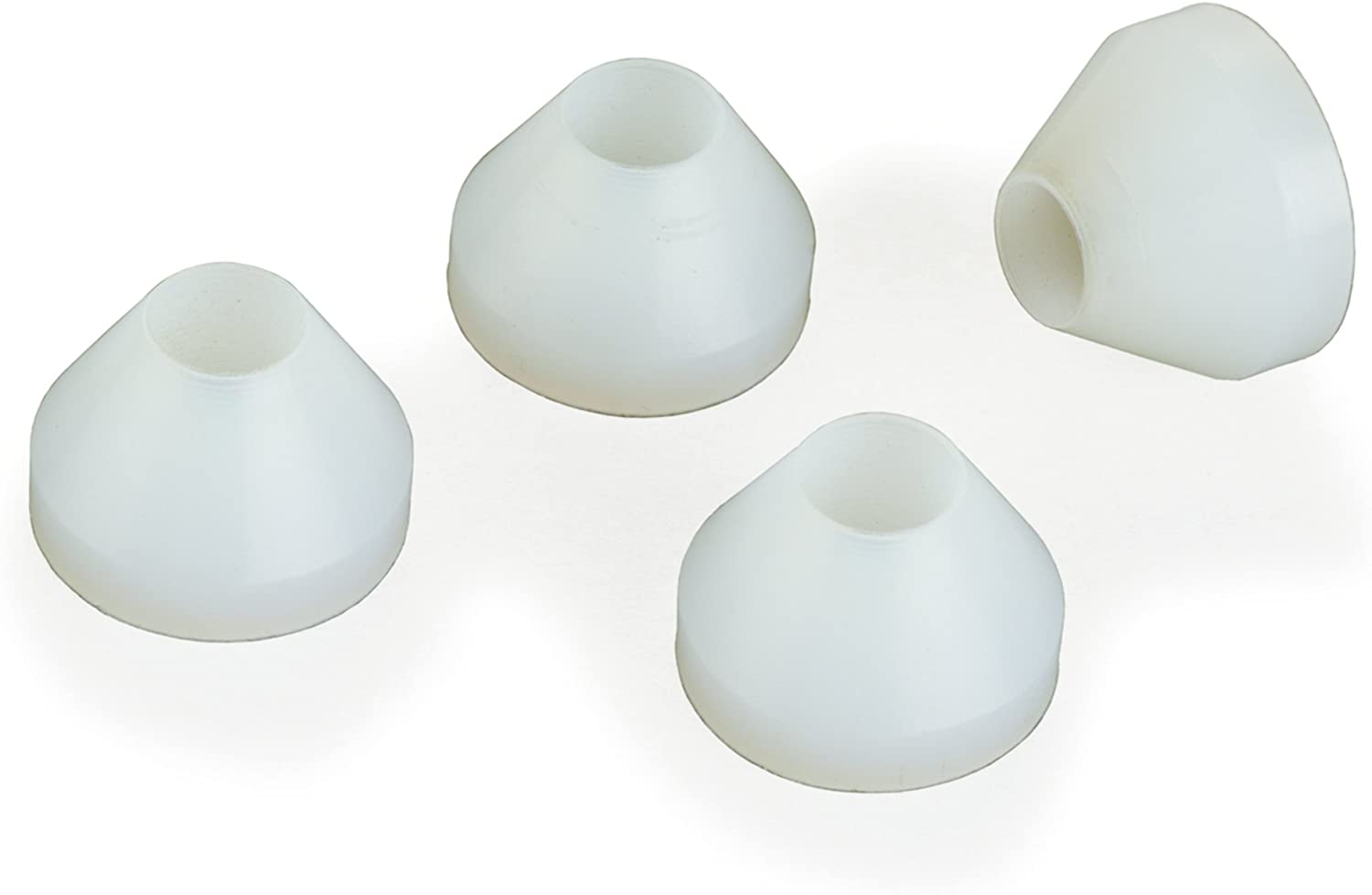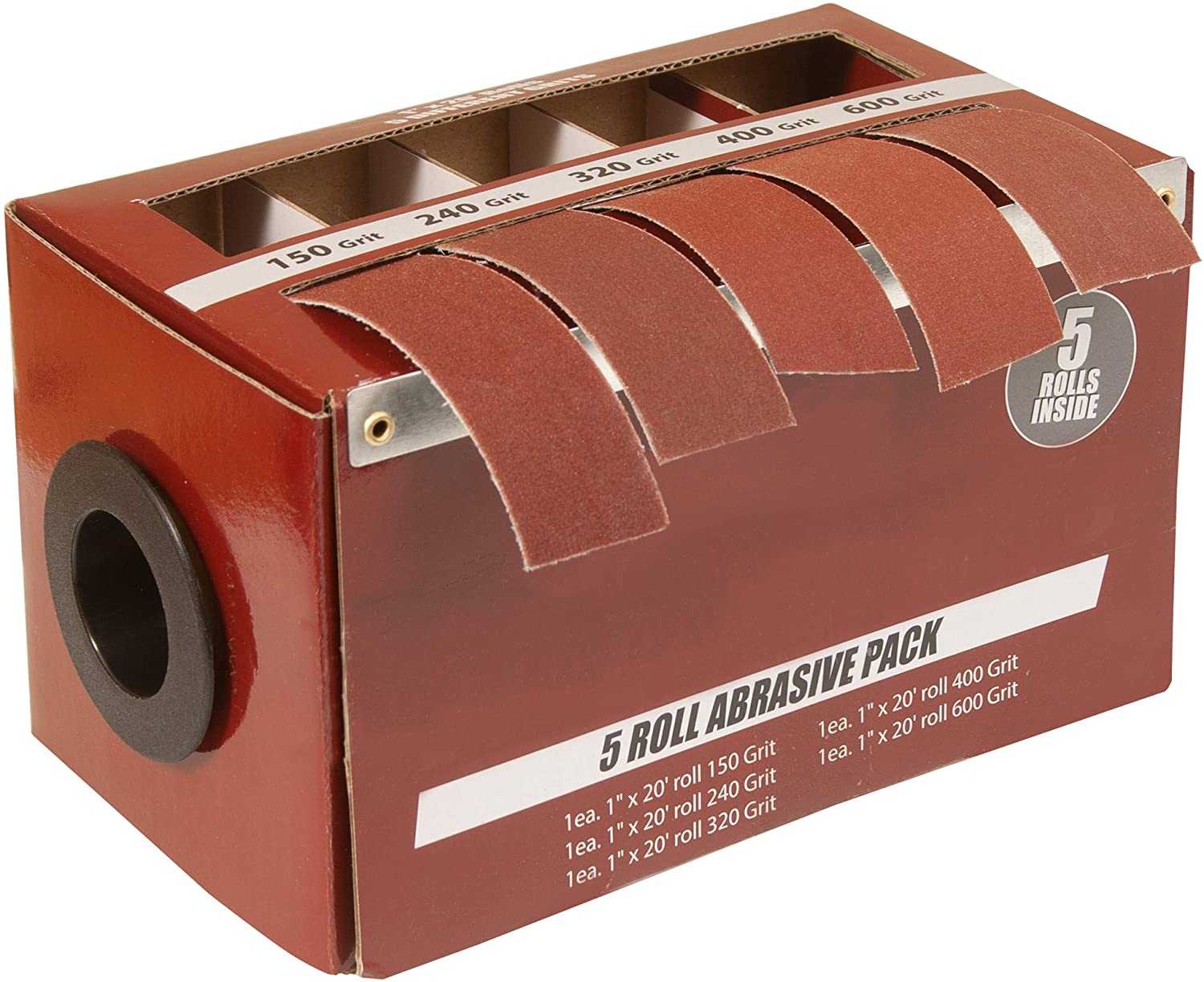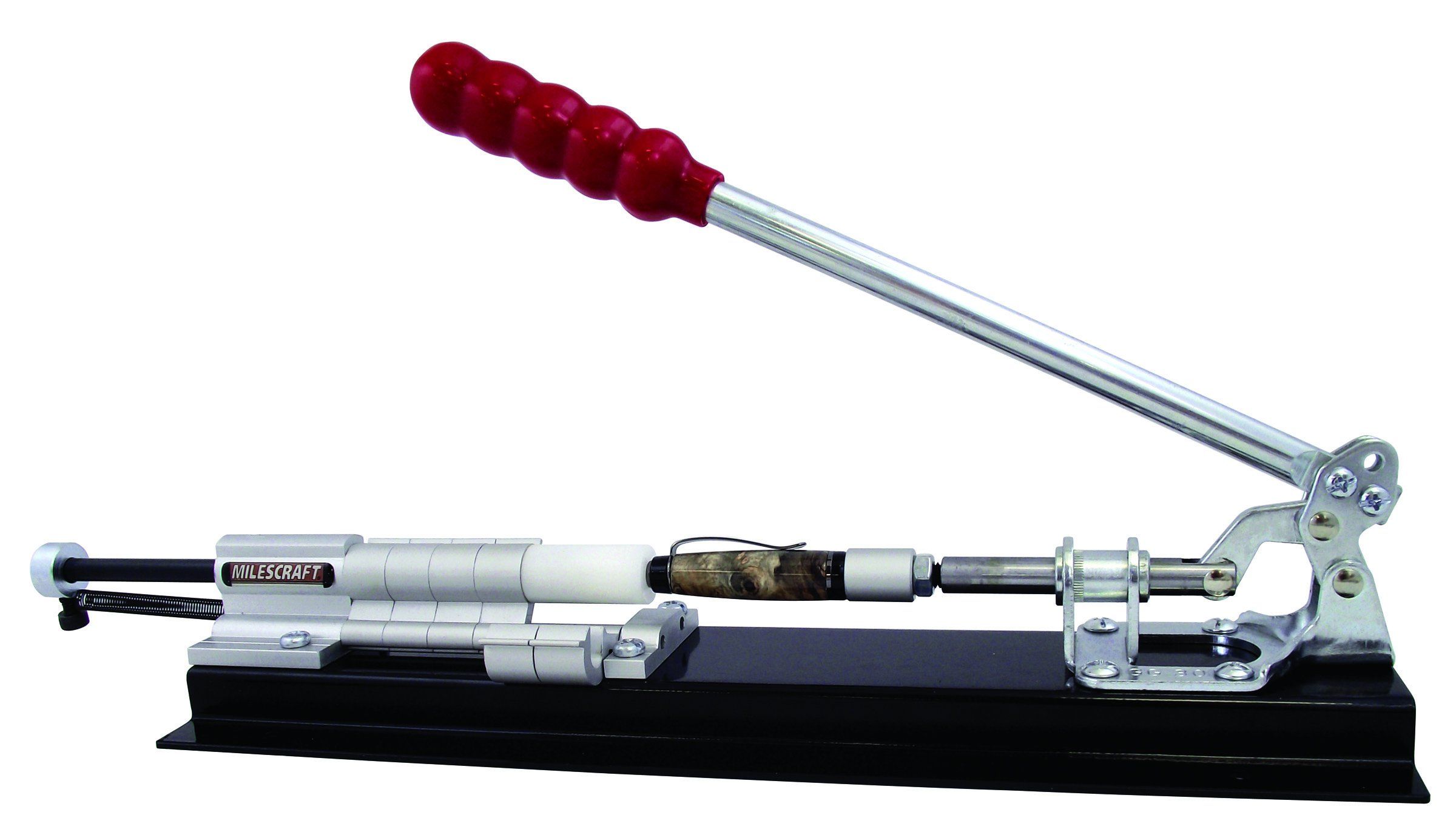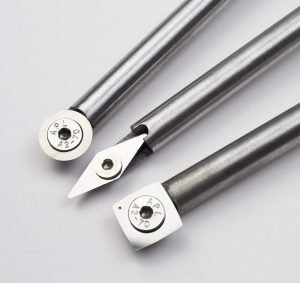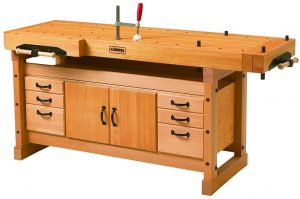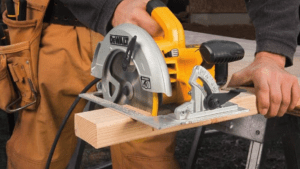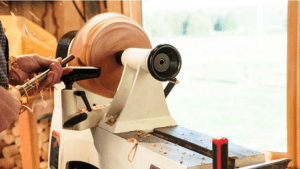Best Pen Turning Kits, Supplies & Tools for Beginners
Start turning pens for leisure or profit now. Discover the amazing world of a pen turner.
Pen turning is a great introduction to woodturning and woodworking. A lot of people start turning pens for fun but end up turning it into a part-time gig.
Some established pen turners make a living by turning and selling beautiful wooden pens at craft shows.
When it comes to getting the right pen turning kits, pen turning tools and a suitable lathe, you need to make the right choice.
When you start turning pens, you’ll realize how addictive pen turning, and woodturning in general really is. If you get tools that can only be used to turn pens, and nothing else, you’ll not be able to maximize your wood lathe and explore anything else like bowl turning or spindle turning.
After turning pens for over 3 years, here’s my best guide on the best pen turning tools and supplies you’ll need to get started.
Pen Turning Kits & Blanks
Slimline pens are one of the most common type of pen turning kits you can find. They are also one of the cheapest kits, and available in many different variations. This kit features 10 different platings so you can experiment with a variety of looks and colors.
A slimline pen design involves turning two separate parts of the pen blank on your wood lathe, assisted by bushings. Turning a slimline pen is rather straightforward, and it’s easier for the beginner because there’s a lot of room for error.
You’ll also want to get additional slimline bushings for these kits, as they have a way of getting lost in your workshop.
Alternatives:
Trying out all sorts of exotic wood is the best reason for turning pens. A single board foot of any of these species for a furniture project can cost a lot of money. But for tiny pen blanks, they are affordable.
This bundle includes Sapele, Bloodwood, Peruvian Walnut, Padauk, Iroko, Purple Heart, Wenge, Yellow Heart, Zebrawood.
You can of course use any offcut from a furniture project as a pen blank, but they will look dull. This is because as your turnings get smaller, you’ll need wood with a lot more figure, grain, and color in them to get attractive results.
Here’s a tip: Do not buy Spectraply (colored plywood) blanks. For whatever reason, no one likes them. You’ll find pen turners selling them dirt cheap, for the same reason.
Alternatives:
Pen Turning Lathe, Tools & Accessories
When it comes to pen turning lathes, there are a few things you’ll need to consider:
- Size – Big lathes can turn pens, but small lathes cannot turn anything else other than pens and small projects.
- MT2 – Morse Taper 2 or MT2 is the common size for the headstock and tailstock of most wood lathes. If you get a MT2 lathe, you’ll have a much easier time finding lathe tools and accessories to match. Other sizes like MT1 and MT3 are less popular, meaning less options for tools.
- 1 x 8TPI spindle – This refers to the headstock spindle, meaning 1″ diameter with 8 threads per inch. 1×8 TPI is the most common size, with the most selection of chucks, tools, and accessories.
That’s why I recommend this Rikon model for pen turners. It has everything you need to start turning pens, but it’s also ready when you want to start turning larger stuff.
Powered by a 1/2HP motor, it has a maximum turning capacity of about 10″ x 18″ (tuning between centers). It has lots of great reviews on Amazon, and comes with a 1-year warranty. Rikon is a well-known brand for lathes and other woodworking tools.
Alternatives:
The biggest mistake you can make is buying “pen turning chisels”. These tend to be small chisels that are not capable of turning anything larger than pens. Trust me, you’ll want something bigger to explore what your wood lathe can do.
Carbide tools are the best to start with because they do not require sharpening. You’ll save a lot of money by not buying grinders, grinding jigs and other lathe tools.
You’ll only need one handle to use all the four different tools. The cutting edges are Carbide, which stays sharp for a long time and are disposable. When they get dull, replace them with new cutters and you’re good to go.
This interchangeable tool by Simple Woodturning Tools is CNC machined 1/2″ solid stainless steel, with overall length of 12″. The handle is CNC machined from solid aircraft aluminum with a soft foam rubber grip. It is just the right size for turning pens, bowls, tool handles and other small projects.
Some woodturners hate carbide tools because they claim these tools do not teach you real woodturning skills. This is true, but they conveniently forget to mention how much money and time it costs to set up, learn, and use traditional tools.
If you’re looking for traditional tools, check out my Best Lathe Tools list instead.
Alternatives:
You cannot turn a pen on the lathe without a pen mandrel. It can be confusing which pen mandrel to get, as there are a few variations.
The one I used the most works with a “mandrel saver”. With the mandrel saver, you can bring your tailstock up to fit the length of your turning easily. No spacers or additional bushings necessary.
I recommend the PSI mandrel, which is an MT2 size, so it will fit the lathes I’ve recommended on this page.
Alternatives:
Other Pen Turning Tools
You’re going to make mistakes with your pen turning. A lot of these mistakes will not be fixable, and you’ll have to start over. However, pen kits do not come with spare tubes.
By getting these 7mm pen tubes, you’ll have spares for Slimline pens and other pens kits that use the same sized tubes.
You can easily cut off the length you need. You can also experiment with single-barrel Slimline pens and modified Slimline pens.
After gluing your tubes, and before you start turning, you’ll need to square up the ends of each blank.
Although there are other ways of doing it, using this system is the easiest. You can use it with a drill press or a hand-held drill. You get a trimmer head with 3/8″, 7mm, 8mm, and 10mm pilot shafts.
Squaring your blanks will prevent cracks and other problems, which can ruin your turning.
Pen blanks are not perfectly square, in fact most of them are rectangles. With this jig, you can easily drill a perfectly centered hole for your brass tubes.
The vise jaws clamp down from both sides with even pressure. As long as the groove in the center of the jaws is lined up with your drill press and drill bit, you can clamp it to your drill press table and drill hundreds of perfectly centered holes when batching out pens.
This jig is optional. I started making pens without one, but having it certainly makes things easier.
If you’ve been constantly struggling with unpleasant glue build-up on your pen blanks, causing a massive headache, then I have some fantastic news for you.
Our must-have bushings are the ultimate solution that will not only spare you the hassle of unpleasant accumulation at the ends of your pens but also save you an ample amount of time.
These bushings are a game-changer that you won’t want to miss out on.
This is completely optional, but it definitely makes it easier to quickly move through the grits as you are turning your pens.
Includes 150, 240, 320, 400 and 600 grit cloth-back sandpaper. The cloth backing makes it easier to tear by hand, and much tough to deal with the heat generated when sanding on the lathe.
A pack like this can last you for about 30-40 pens, and you just might find it handy for your other woodworking tasks.
To achieve the best possible finishes on your pens treated with CA glue, it’s important to invest in high-quality sanding pads. MicroMesh sanding pads are an excellent choice, as they offer a range of highly-grit pads, ranging from 1,500 to 12,000 grit.
Each color corresponds to a specific level of grit, ensuring that you can get the perfect finish every time.
By starting with the lowest grit and working your way up to the highest, you’ll be able to create a stunningly reflective mirror finish that’s sure to impress anyone who sees your work. So if you’re looking for the best possible results, be sure to add a pack of MicroMesh sanding pads to your toolkit today.
If you want to ensure the safety and longevity of your newly assembled pen, then it’s absolutely crucial to use the proper tools.
While a bench vise or drill press may seem like viable options, they can actually put too much pressure on the delicate pen parts and cause cracking or breakage. In order to avoid these frustrating and expensive issues, I highly recommend investing in the Milescraft 4700 pen press.
This expertly designed tool allows for precise and controlled assembly of your pen parts, ensuring a flawless end result every single time. With its simple manual lever and easy-to-use adjustable angle settings, the Milescraft pen press makes assembly a complete breeze.
Trust me, as a proud owner and user of this fantastic product for many years now, I can confidently say that you simply won’t be disappointed.

